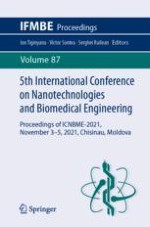2022 | OriginalPaper | Chapter
Microbiological Decontamination of Air and Surfaces Due to Nanosecond Discharges
Authors : Iurie Bosneaga, M. Bologa, E. Agarwal
Published in: 5th International Conference on Nanotechnologies and Biomedical Engineering
Publisher: Springer International Publishing
Activate our intelligent search to find suitable subject content or patents.
Select sections of text to find matching patents with Artificial Intelligence. powered by
Select sections of text to find additional relevant content using AI-assisted search. powered by
